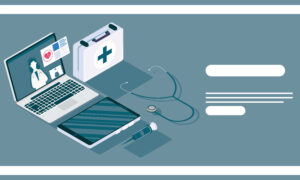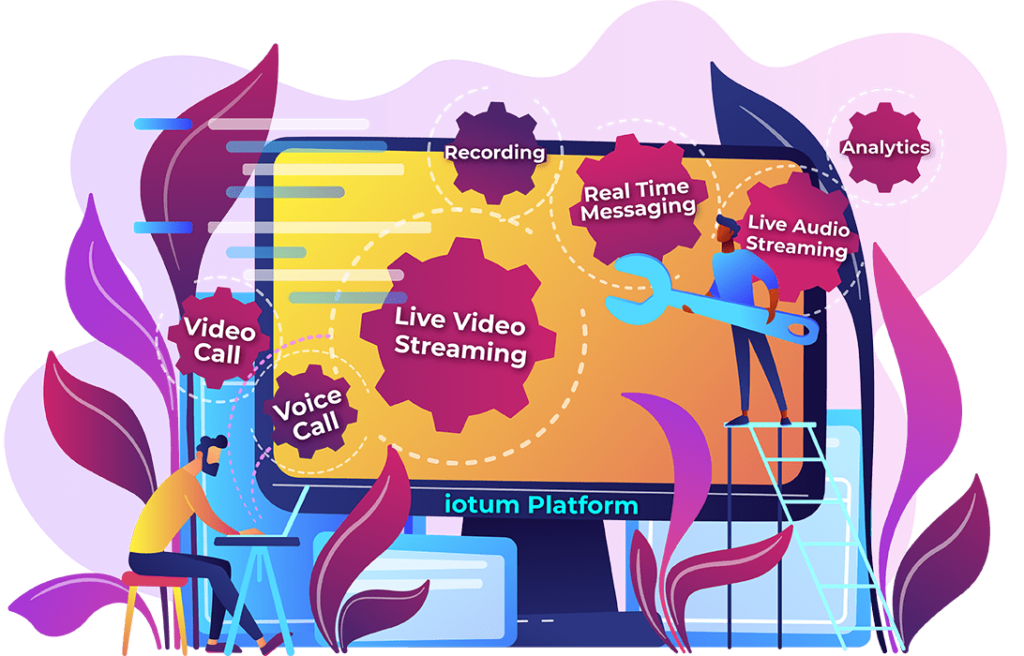
The landscape of the healthcare industry has undergone a remarkable transformation in recent years due to advancements in technology.
Telehealth—the use of digital audio/visual communications technology to deliver healthcare services remotely— has emerged as a crucial player in revolutionizing how patients and healthcare providers interact.
By breaking down barriers of time and distance in healthcare services delivery, telehealth has become increasingly important in today’s healthcare industry with how it helped to improve access to care, optimize patient outcomes, and reduce healthcare costs.
The possibilities of telehealth implementations are virtually limitless, from empowering remote patient treatments to enhancing virtual patient-doctor consultations. Yet, in this article, we will explore the ten best cutting-edge Telehealth ideas that are revolutionizing the healthcare industry.
So, fasten your seatbelts as we dive into the present and future of healthcare via telehealth, and let’s embark on this journey of discovery.
10 Best Telehealth Ideas in Healthcare
Telehealth Idea 1: Virtual Patient-Doctor Consultations
One of the most common telehealth practices is virtual patient-doctor consultations, which have emerged as a major game-changer in the healthcare industry.
Remote consultations offer a myriad of benefits for both doctors (or healthcare providers) and patients, enhancing the overall healthcare experience.
These are just some of the benefits:
- Accessibility and convenience: virtual patient-doctor consultations eliminate the need for physical visits, so patients can connect with their doctors from the comfort of their homes or offices. This benefit can be especially valuable for patients with emergencies or mobility issues. Yet, this can also benefit those living in remote, rural areas and those with busy schedules.
- Time and cost savings: eliminating the need for travel to the hospital or clinic will also reduce the expenses and time associated with traditional healthcare appointments.
- Improved patient engagement: by leveraging video conferencing, doctors can engage with patients more effectively and can help foster a better patient-doctor relationship. Patients can also have a more active engagement during virtual consultations.
- Continuity: virtual consultations allow for seamless follow-up and continuous care management, ensuring that patients receive timely medical attention and consistent healthcare support.
According to a 2021 survey by the American Medical Association (AMA), more than 80% of respondents indicate that patients have better access to care since using virtual consultations.
Telehealth Idea 2: Remote Patient Monitoring Solutions
Remote Patient Monitoring (RPM) has been another game-changer in healthcare, enabling healthcare providers to monitor patients remotely outside the barrier of distance and time.
In RPM, video conferencing can be used by healthcare providers to stay connected with patients, so they can be monitored remotely. When needed, the healthcare provider can also use video conferencing to remotely provide support and education to patients.
Besides audio/video telecommunication devices, RPM often leverages IoT devices and other cutting-edge technologies to collect real-time health data from patients, including:
- Wearables: patients may wear smartwatches, medical sensors, and health/fitness trackers to monitor their vital and health signs. Medical professionals can monitor this data to make informed medical decisions.
- Home monitoring devices: healthcare providers may decide to install home monitoring devices to track patients’ blood pressure, weight, glucose levels, and others more accurately.
- Mobile applications: specially designed mobile apps allow patients to receive alerts/reminders (i.e., to take medications), send alerts to the medical team, input data, etc., to ensure better engagement and adherence to healthcare plans.
With these technologies on top of telehealth, RPM has yielded remarkable benefits and has been shown to help improve patient outcomes, especially in chronic disease management.
Telehealth Idea 3: Telepsychiatry and Mental Health Support
Telepsychiatry refers to a type of telehealth that allows mental health patients to receive remote care from a mental health professional (i.e., psychiatrist.) from a distance.
With how the global mental health crisis intensified in recent years, telepsychiatry has emerged as an important solution to bridge the gap between mental health patients and healthcare providers; for example:
- Overcoming barriers of stigma: mental health stigma often prevents those in need of care from seeking help. In such cases, telepsychiatry offers privacy and a safe space for these individuals to receive support.
- Breaking geographical barriers: telepsychiatry enables access to mental health services for individuals in underserved areas. The demand for mental health services has surged dramatically in recent years, and telepsychiatry allows mental health professionals to reach more people in need efficiently.
- Improving early intervention and crisis management: in managing mental health conditions, timely intervention is often critical. Telepsychiatry facilitates this early detection and intervention to reduce the risk of hospitalizations and crises.
- Remote support for high-risk individuals: for individuals with a high risk of suicide or self-harm, telepsychiatry can ensure they receive immediate support regardless of time and location.
Telehealth Idea 4: Telemedicine for Chronic Disease Management
Chronic diseases, such as hypertension, heart disease, diabetes, asthma, and others, necessitate ongoing monitoring and management to ensure optimal outcomes. Yet, chronic disease management was traditionally challenging both in terms of logistics and costs.
With that being said, telemedicine has emerged as a viable solution, with how it can improve access to care, reduce costs, and effectively enhance the overall quality of the treatment experience.
In chronic disease management, telemedicine can:
- Facilitate regular monitoring and timely interventions, enabling healthcare providers to remotely monitor the patient’s health status, which allows them to identify potential crises early and intervene ASAP.
- Reduce the need for hospital visits, which may minimize exposure to diseases and infections.
- Allow healthcare providers to tailor personalized care plans based on the individual’s health data, preferences, and lifestyle to ensure optimal treatment strategy.
- Ensure more effective education on self-management techniques, so patients can have better control of their health
When using telemedicine for chronic disease management, however, data security is an important concern due to the frequent exchange of sensitive patient information in telemedicine.
Healthcare providers must implement robust data security measures to protect patient confidentiality. For example, using a telehealth video conferencing API that complies with relevant regulations such as HIPAA (Health Insurance Portability and Accountability Act).
Telehealth Idea 5: Remote Medical Training and Continuing Education
Telehealth benefits are not only limited to aiding patient-doctor interactions, but can be used to provide remote medical training and education for healthcare professionals in need.
Remote medical training and continuing education via telehealth can offer many advantages, including:
- Improved access to training: By leveraging the capabilities of telehealth technology, healthcare professionals or aspiring professionals can gain access to learning the latest treatments, skills, knowledge, and best practices beyond geographical limitations. For example, those who have difficulty traveling or live in underserved areas.
- Global reach: with telehealth, healthcare professionals can access seminars and educational programs from experts and institutions in different countries.
- Cost-effectiveness: reduces expenses otherwise associated with in-person training, like travel and accommodation.
- Interactive and personalized learning: virtual and remote medical learning often include more interactive and personalized learning elements, allowing healthcare professionals to address their unique educational needs in a more engaging way.
- Networking and peer collaboration: by leveraging telehealth, healthcare professionals can collaborate with peers worldwide, engage in virtual discussions, and build fruitful relationships to foster a supportive learning community.
Remote medical training via telehealth can be a powerful way to improve the knowledge and expertise of healthcare professionals in remote, underserved areas and contribute to improving the overall healthcare quality all around the world.
Telehealth Idea 6: Virtual Physical Therapy
We can also leverage telehealth to provide virtual physical therapy (VPT), which has emerged as a revolutionary approach to providing physical rehabilitation and therapeutic interventions.
The innovative mode of physical treatment offers a range of benefits, including:
- Convenience: virtual physical therapy (VPT) allows patients to get their therapy sessions without needing to travel to a hospital or clinic, which can be a major advantage for those with mobility challenges or living in remote rural areas.
- Flexibility in scheduling: patients can schedule virtual sessions at their convenience (i.e., as an in-demand content), so they have more versatility in managing their treatment plan.
- Continuity of care: virtual physical therapy enables patients to maintain a consistent therapy routine without the issue of time and distance barriers, which may result in better treatment outcomes.
- Cost-effectiveness: in many cases, VPT can be more cost-effective than in-person physical therapy, mainly because it eliminates the need for travel and parking fees.
VPT can be a great example of the transformative potential of telehealth in enhancing treatment and rehabilitation outcomes. Leveraging telehealth technology can allow patients to experience personalized rehabilitation, continuous support, and access to better mobility and functionality improvements in the comfort of their homes.
Telehealth Idea 7: Remote Health Diagnostics and Imaging
With the advancements in telecommunications technologies, telehealth has revolutionized the field of diagnostics, imaging, and analytics. Healthcare professionals can remotely access and interpret medical imaging, laboratory tests, and diagnostic data.
Telehealth can play a number of roles in diagnostic imaging and test analysis, including:
- Remote consultations with radiologists: telehealth allows patients to virtually consult with a radiologist without having to travel to a hospital or clinic.
- Sending images to radiologists for interpretation: radiologists can receive and interpret images from anywhere in the world.
- Providing remote education and support: radiologists can leverage telehealth to provide support and education to patients, helping patients understand their test results accurately.
- Reduced patient anxiety: with telehealth, patients can receive timely feedback on imaging and test results, which can alleviate anxiety that is often associated with waiting for in-person appointments.
- Amplified reach: Telehealth diagnostics are also highly scalable, making them suitable for accommodating the growing diagnostic needs of a larger patient population.
Telehealth’s impact on diagnostic imaging and analysis has been nothing short of revolutionary, improving reach, accuracy, and efficiency, which will benefit both healthcare providers and patients.
Telehealth Idea 8: Telemedicine in Rural Underserved Areas
Unfortunately, even today, in 2024, healthcare disparities are still a pressing issue, especially affecting rural and underserved areas.
In these scenarios, telemedicine can be a viable and powerful solution, providing innovative and accessible healthcare options for individuals residing in these regions. This telehealth initiative offers a range of benefits for both healthcare professionals and patients:
- Increased accessibility: telemedicine makes healthcare more accessible to patients who live in rural or underserved areas or those who have difficulty traveling (i.e., mobility issues.)
- Reducing costs: telemedicine reduces or eliminates the costs otherwise associated with travel and accommodation
- Timely care delivery: telehealth technology facilitates timely access to consultations, diagnostics, and treatments
- Specialized expertise: telemedicine allows healthcare providers in rural areas to collaborate with experts and specialists from other areas or even other countries, improving the quality of care
- Providing education and support: telemedicine facilitates education to patients and other healthcare providers, empowering higher quality of care.
Telemedicine’s impact in rural and underserved areas cannot be underestimated and is a beacon of hope towards equal and accessible healthcare for all.
Telehealth Idea 9: Virtual Support Groups and Patient Communities
Another valuable telehealth initiative is to facilitate a virtual patient support group, providing patients (i.e., those with chronic conditions) with a platform to connect, find support, and share their experiences.
These virtual communities offer a myriad of benefits, including:
- Shared experiences and empathy: virtual support groups create a safe space for patients to share their experiences, challenges, and triumphs. Hearing from others who are successfully managing their condition, for example, can help a patient stay more motivated.
- Practical tips and coping strategies: within the virtual group, patients can exchange practical advice, self-care tips, and coping strategies to empower each other.
- Increased knowledge: virtual patient communities can provide a wealth of information, which can help people to better understand their condition and make more informed decisions about their care.
- Peer advocacy and empowerment: virtual support groups may advocate for patient’s rights and needs, promoting empowerment and self-advocacy for patients.
Telehealth Idea 10: Telepharmacy and Medication Management
Telepharmacy refers to the use of telehealth technology to remotely provide pharmacy services, enhancing medication management, patient counseling, and adherence to medication.
Telepharmacy offers a range of benefits for patients and pharmacists:
- Improved adherence: we can leverage telepharmacy to provide personalized medication reminders and follow-up consultations, which may help patients stay on track with their medication regimen and reduce the risk of errors.
- Accessible medication expertise: patients in remote or underserved areas can use telehealth technology to access licensed and expert pharmacists in other areas or even other countries.
- Medication reviews and interactions: through virtual consultations, pharmacists can conduct medication reviews to identify drug interactions, so they can provide more optimized drug therapies.
Conclusion
As we have explored the top 10 telehealth ideas above, it becomes evident that telehealth is definitely a transformative force in today’s modern healthcare. By providing patients with access to healthcare from anywhere, telehealth can help to improve equality in healthcare access, reduce costs, and improve patient outcomes.
Iotum is a leading video conferencing API solution for telehealth that can help healthcare providers to deliver innovative and seamless telehealth initiatives effectively. Iotum ensures reliable and secure telecommunication, and is designed to meet the needs of both healthcare providers and patients.
If you are looking for a way to improve how you deliver healthcare, make sure to check out Iotum.


